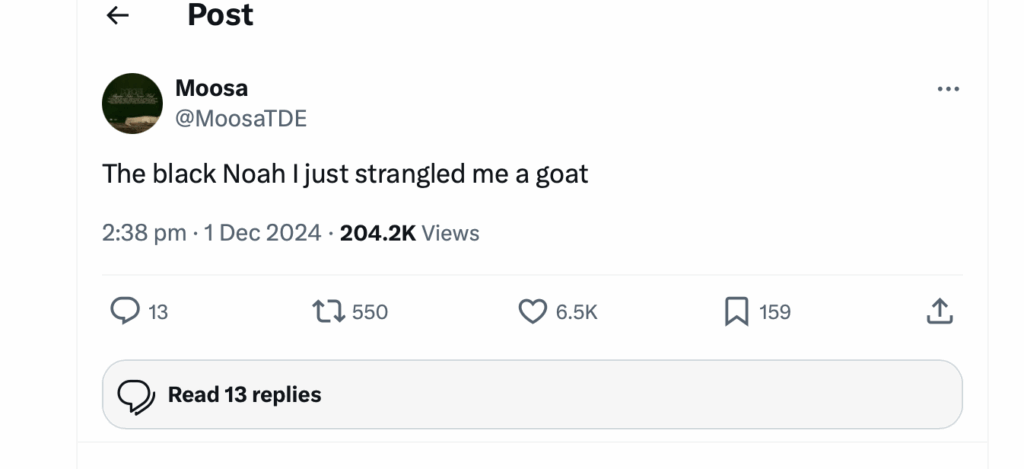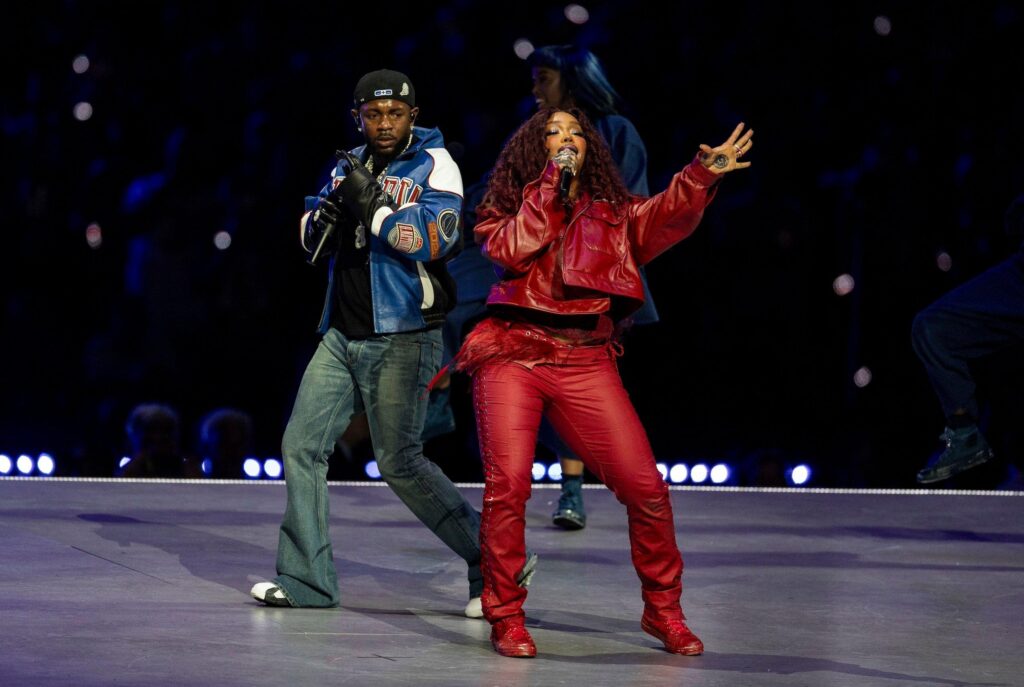A Sudden Release and a Short Statement
Kendrick Lamar unexpectedly released GNX on November 22, 2024, prompting the hip-hop community to prepare for significant repercussions. His sixth studio album, the first release after departing Top Dawg Entertainment to manage his pgLang label, was unavoidably to be examine as a declaration of freedom. At just 44 minutes across 12 tracks, GNX is his shortest album to date, yet it delivers an explosive infusion of energy, disagreement, and cultural identity. The album features contributions from SZA (on both “Luther” and “Gloria”), Jack Antonoff, Kamasi Washington, Roddy Ricch, and others, reflecting a sonic landscape grounded in West Coast heritage while expansive to incorporate in G-funk, jazz, orchestral, and Memphis-style grit. More than a sequel to 2022’s Mr. Morale and the Big Steppers, which premiered the Billboard 200 in its first week; GNX establishes itself as a creative declaration not only for its mysterious launch as well as for its minimalistic confidence.

What does GNX mean?
To truly understand the meaning, one must ask: what does GNX mean? The answer lies on the cover. The title pertains the 1987 Buick Regal Grand National Experimental, known as “Darth Vader’s car.” This exclusive model, all black and faster than the conventional Grand National, it was produced in only 547 units, each comes with a unique serial number. The GNX rarity and mythos among automotive enthusiasts serves as a powerful metaphor for Lamar’s artistic perspective. He relates himself as a rare, experimental, and powerful entity—unique, powerful, and coveted, rather than mass-produced for mainstream population. By selecting this symbol, Lamar suggests his work ought to be examined independently, rather than something distinctive, not ,measured against the constant churn of commercial hip-hop.
From Alley Corners to Performing Stages
Rap has consistently served as a musical expression of the community, reflecting an oppressive ethos akin to that of punk. In 1970s New York, both genres often shared audiences and venues before diverging into separate cultural paths. Like punk, rap fundamentally originates from the streets, expressing the frustrations of the working class transformed into rhythm and verse. Lamar occupies an important place within this tradition. Although some fans and reviewers have claimed that he prefers critical praise and institutional validation which includes Pulitzer Prize,Grammys and the reputation of rap. Undoubtedly, the GNX album challenges the perception.It is more relaxed, less conceptually dense, and less concerned with moral intricacy than To Pimp a Butterfly or Mr. Morale. However, that is precisely the point. By opposing polished expectations, Lamar merges into instinct and swagger ,aligning himself with punk’s raw vitality rather than the flawless structure of symphonic perfection.
Dissing Without Naming
In the very start of “Wacced Out Murals,” Lamar indicates that the shadow of his conflict with Drake remains, however he addresses it indirectly. The song exposes false figures in the industry, rappers who project authenticity while depending on anonymous writers or artificial sounds. Although Drake is not directly mentioned, but the implication is obvious. Lamar portrays himself as the artist crafting enduring art, whilst his competitor is diminished to graffiti. In “Hey Now (feat. Dody6),” Kendrick delivers the album’s most pointed critique with the phrase “I just strangled me a GOAT.” Drake has always maintained his designation as the “Greatest of All Time,” while the lyrics suggest Kendrick’s success. Subsequently, “Heart Pt. 6” appears, reclaiming a title Drake attempted to steal during their conflict. Rather than meeting fire with fire, Lamar reframes the narrative, proving authenticity, spirituality, and legacy while showing that the “Heart” series is his own. These hidden messages convert the conflict into a backdrop for broader reflections on creativity and resilience.

Musical Diversity and West Coast Glory
The record is also a tribute to living on the West Coast. The fast-paced mix of G-funk and hip-hop in “Squabble Up” depicts the joyful atmosphere of Los Angeles party scene. “Dodger Blue” and “Peekaboo” show how loyal and strong the city is. The title track, which is based on the GNX automobile, underlines concepts of exclusivity and strength by making Lamar seem like a highly tuned machine that can beat the competition. “Luther,” which features SZA and tracks from Luther Vandross, shows how versatile he is by smoothly switching from aggression and empathy, from raw street fire to refined soul. What stands out the most about the song is how it shows Lamar’s ability to make real connections with other artists. This is very different from Drake, who is sometimes criticised for using features to generate surface-level chemistry.
From Streaming Recordings to Arena Performances
You can’t overlook how well GNX has done. It went straight to the top of the Billboard 200, smashed streaming records in a matter of hours, and pushed hits like “Squabble Up” and “Luther” up the charts. But Lamar’s domination hasn’t only been about statistics; it has also shown up in cultural events like his Super Bowl halftime concert and the huge Grand National Tour with SZA. The album’s real value yet isn’t in its chart places or awards. What makes GNX important is that it takes rap’s combative edge and mixes it with punk’s raw immediacy, while simultaneously ignoring the polished expectations that frequently follow Lamar. He mixes subtle insults, West Coast pride, and a little of self-mythologizing into something that is both simple and defiant throughout the course of twelve short songs. GNX isn’t about trying to be flawless; it’s about making your presence known. Lamar reminds us that even the most popular rap can still be urgent, restless, and designed to last.


